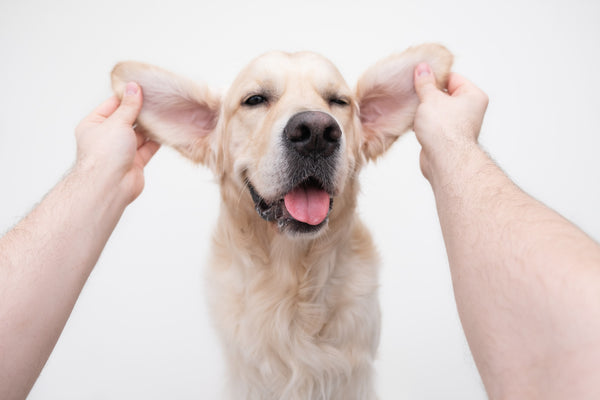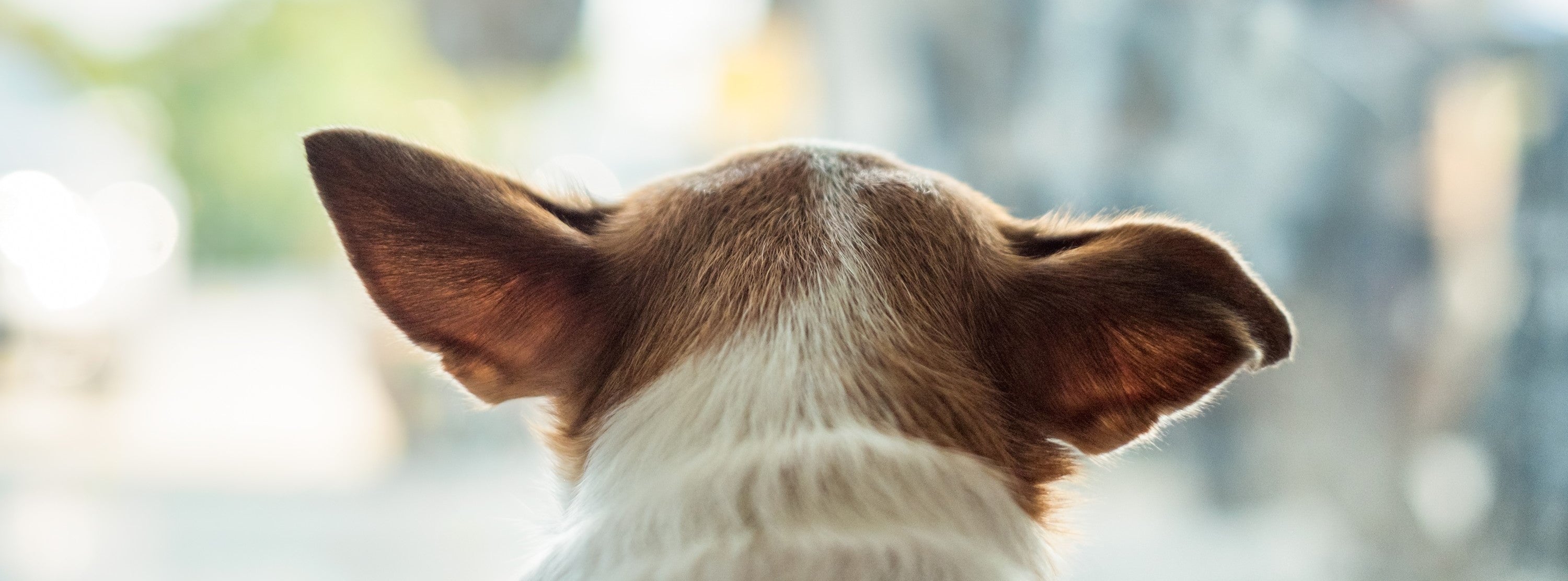Your dog's ears are not just adorable fuzzy flaps; they're also an essential part of their well-being. Yet, dog owners often overlook ear hygiene until a foul odor catches their attention. Don't wait for the stench to signal trouble in your furry friend's ears!
In this comprehensive guide, we'll explore effective ways to keep dog ear odor at bay.
The Importance of Ear Hygiene in Dogs
Truly understanding the benefits of ear hygiene for your dog's health is the first step towards avoiding smelly dog ears. A dog's ears are dark, warm, and damp—ideal conditions for microorganisms to thrive. Neglecting ear hygiene can lead to painful ear infections, and in severe cases, affect your dog’s hearing.
Benefits of Clean Ears for Dogs
Consistently maintaining your dogs' ears can deliver numerous benefits beyond just preventing odors, such as:
- Improved Comfort: A dog with clean ears is a happier dog, free from the pain and itchiness caused by ear infections.
- Prevention of Infections: Regular cleaning removes the buildup that can lead to painful infections.
- Preservation of Hearing: Ears free of blockages function better, which is especially important for working dogs and those who rely on their acute sense of hearing.
Causes of Smelly Ears
Bacterial Infections
Bacterial ear infections are the most common cause of unpleasant odors in dog's ears. Bacteria can enter your dog's ear canal through cuts, scratches, or abrasions, leading to overgrowth and infection. A bacterial ear infection can result in a foul-smelling discharge that may also include redness, swelling, and itching.
Excessive Ear Wax Accumulation
While wax is essential for trapping dirt and debris, too much of it can lead to odors. Excessive wax buildup can create a breeding ground for bacteria and yeast, leading to infections and an unpleasant smell.

Yeast Infections
Yeast infections are caused by an overgrowth of yeast, a type of fungus that commonly resides in a dog's ears. This can be triggered by underlying health conditions or allergies and can lead to a musty, pungent odor and thick dark discharge. Dogs with floppy ears or those who swim frequently are more prone to yeast infections.
Foreign Objects
Foreign objects, such as grass seeds or foxtails, can also cause unpleasant odors in your dog's ears. These objects can get stuck deep inside the ear canal and lead to irritation and infection. If you notice an unusual smell coming from your dog's ears (such as a sweet or musty smell), it's essential to check for any foreign objects and remove them carefully.
Ear Mites
Ear mites are tiny parasites that can cause itching, irritation, and a foul odor in your dog's ears. These mites feed on the wax and oils inside the ear canal and can quickly multiply if left untreated. If your dog is constantly shaking their head or scratching at their ears, it's crucial to visit a veterinarian for proper treatment.
Poor Hygiene
Just like humans, dogs need regular hygiene maintenance to stay clean and healthy. Failure to clean your dog's ears regularly can lead to a buildup of dirt, debris, and bacteria, resulting in a foul odor. It's essential to incorporate ear cleaning into your regular grooming routine.
7 Effective Cleaning Techniques
Now that you understand the importance of keeping your dog's ears clean and the dos and don'ts, let's dive into seven effective cleaning techniques!
1. The Gauze Method
This method is best suited for dogs with minimal wax build-up or those who are prone to ear infections. It involves using a dampened, clean gauze pad to wipe the inside of your dog's ear. Be sure to inspect for any signs of irritation or infection before and after cleaning.
2. The Cotton Ball Method
This is similar to the gauze method, except that you'll be using a cotton ball instead. With this method, you can also use a small amount of vet-approved ear-cleaning solution on the cotton ball for a deeper clean.
3. The Squeeze Bottle Method
This method is useful for dogs with a moderate amount of ear wax build-up or those prone to mixed ear infections. Fill a squeeze bottle with the vet-approved solution and gently squirt it into your dog's ear canal. Massage the base of their ear to allow the solution to loosen any debris, then use cotton balls to wipe away excess liquid and debris.
Looking for the perfect solution? Try our Pet Honesty’s Restore + Soothe Ear Cleaner. By relieving ear aches & itching that cause discomfort & frustration, your pet's true personality can shine through (4 out of 5 vets recommend it!).

4. The Ear Drops Method
For dogs with excessive ear wax buildup or those showing signs of an ear infection, using vet-approved ear drops is a highly effective method. Follow the instructions provided by your veterinarian and be sure to massage your dog's ears after application.
5. The Ear Flushing Method
This method is usually performed by a professional at your veterinarian's office but can also be done at home if you have prior experience. It involves flushing out the ear canal with a vet-approved solution using a syringe or bulb syringe.
6. The Ear Powder Method
For dogs that are prone to excessive wax build-up, using an ear powder approved by your veterinarian can help absorb and remove excess wax. Apply the powder to the inside of your dog's ears and gently massage for a few minutes before wiping away any excess.
7. The Soothing Solution Method
If your dog has irritated or inflamed ears, using a soothing solution approved by your veterinarian can help provide relief. Apply the solution to a clean cotton ball and gently wipe the inside of your dog's ear.
FAQs
Q: How often should I clean my dog's ears?
A: The frequency of ear cleaning depends on your dog's breed, coat type, and overall health. Consult with your vet for a recommended schedule.
Q: Can I prevent my dog from getting ear infections?
A: While some breeds are more prone to ear infections, regular cleaning and early detection of mixed ear infections can significantly reduce the risk. Always consult with your vet for personalized advice.
Q: Can I use human ear cleaning products on my dog?
A: No, it's important to use only products specifically designed for dogs because human products may contain ingredients that can be harmful to your pet.
Q: How can I tell if my dog has an ear infection?
A: Some common signs of yeast infection include redness, swelling, discharge, and a foul odor. If you notice any of these symptoms, it's best to consult with your vet for proper diagnosis and treatment.
Q: Are there any breeds that require more frequent ear cleaning?
A: Yes, dogs with long, floppy ears (such as Cocker Spaniels and Basset Hounds) may need more frequent cleaning due to the increased risk of moisture getting trapped in their ears.
Q: Can I use a hairdryer to dry my dog's ears after cleaning?
A: No, your dog's ears are healthy, but it’s best to avoid using a hairdryer or any other heat source near your dog's ears since it can cause burns and damage sensitive tissues.

Q: How can I make ear cleaning a positive experience for my dog?
A: Start by introducing your dog to the process slowly and offering treats and praise. Make sure to use gentle, calming movements and stop if your dog shows any signs of discomfort.
Q: Can regular ear cleaning prevent ear mites?
A: While ear mites are more common in dogs who don't receive regular ear cleaning, it's not a guarantee. If you suspect your dog has ear mites, consult with your vet for proper treatment.
Q: Can I clean my dog's ears at home if they have an ear infection?
A: No, it's important to seek veterinary help in this situation, as improper cleaning can worsen the infection. Your vet can provide the necessary treatment and advise on when it's safe to resume home cleaning.
Q: Are ear infections in dogs contagious to humans?
A: No, most ear infections in dogs are caused by specific bacteria or yeast in dogs' ears that do not typically affect humans. However, always practice proper hygiene when handling your dog's ears to prevent any potential issues.
Q: Is it safe to clean my senior dog's ears?
A: Yes, regular ear cleaning is necessary for dogs of all ages. However, it's important to be gentle and careful when cleaning older dogs' ears since they may have more sensitive skin.
Q: Can I use vinegar to clean my dog's ears?
A: No, using vinegar can irritate your pup's delicate ear canal and potentially cause harm. Stick to vet-approved cleaning solutions specifically designed for puppies.
Q: Is it necessary to clean my dog's ears if they aren't showing any signs of discomfort?
A: Yes, regular ear cleaning is important even if your dog isn't showing any symptoms. This can help prevent potential issues and maintain overall ear health. Consult with your vet for a recommended cleaning schedule that suits your dog's needs.
Q: What are natural remedies for ear cleaning my dog?
A: There are several natural remedies for ear cleaning that you can try, such as using a mixture of warm water and apple cider vinegar or coconut oil. However, it's important to consult with your vet before trying any new DIY solutions to ensure they are safe and effective for your dog.
Conclusion
Adopting a regular ear care routine for your dog is a simple, yet critical, way to show you care. By familiarizing yourself with safe and effective cleaning methods, you're taking proactive steps to prevent recurrent ear infections and issues that could plague your furry companion.
Make your dog's health a priority and don't shy away from those ears—it's all part of being a loving and responsible pet owner. Looking for more expert pet knowledge? Check out our blog here!













